
Kód: 09201210
Hypocretins
Autor Luis De Lecea, J. Gregor Sutcliffe
The first report that rapid eye movements occur in sleep in humans was published in 1953. The research journey from this point to the realization that sleep consists of two entirely independent states of being (eventually labeled ... celý popis
- Jazyk:
 Angličtina
Angličtina - Vazba: Brožovaná
- Počet stran: 441
Nakladatelství: Springer-Verlag New York Inc., 2014
- Více informací o knize

3313 Kč

Skladem u dodavatele v malém množství
Odesíláme za 12-15 dnů
Potřebujete více kusů?Máte-li zájem o více kusů, prověřte, prosím, nejprve dostupnost titulu na naši zákaznické podpoře.
Přidat mezi přání
Mohlo by se vám také líbit
-

Descriptive Catalogue of the Books Printed in the Fifteenth Century Lately Forming Part of the Library of the Duke Di Cassano Serra
1008 Kč -

Ethnobotany of India, Volume 4
4415 Kč -

A MEMORIAL DISCOURSE ON THE CHARACTER OF
786 Kč -

Compend of English Grammar (Classic Reprint)
379 Kč -

James K. Polk: Jacksonian, 1795-1843 Volume I
2101 Kč -

Illustrated Course Guide: Microsoft (R) Office 365 & Excel 2016
1446 Kč -

KS2 Maths Arithmetic SATs Practice Question Book
177 Kč
Dárkový poukaz: Radost zaručena
- Darujte poukaz v libovolné hodnotě a my se postaráme o zbytek.
- Poukaz se vztahuje na celou naši nabídku.
- Elektronický poukaz vytisknete z e-mailu a můžete ihned darovat.
- Platnost poukazu je 12 měsíců od data vystavení.
Více informací o knize Hypocretins
Nákupem získáte 331 bodů
 Anotace knihy
Anotace knihy
The first report that rapid eye movements occur in sleep in humans was published in 1953. The research journey from this point to the realization that sleep consists of two entirely independent states of being (eventually labeled REM sleep and non-REM sleep) was convoluted, but by 1960 the fundamental duality of sleep was well established including the description of REM sleep in cats associated with "wide awake" EEG patterns and EMG suppression. The first report linking REM sleep to a pathology occurred in 1961 and a clear association of sleep onset REM periods, cataplexy, hypnagogic hallucinations and sleep paralysis was fully established by 1966. When a naďve individual happens to observe a full-blown cataplexy attack, it is both dramatic and unnerving. Usually the observer assumes that the loss of muscle tone represents syncope or seizure. In order to educate health professionals and the general public, Christian Guilleminault and I made movies of full-blown cataplectic episodes (not an easy task). We showed these movies of cataplexy attacks to a number of professional audiences, and were eventually rewarded with the report of a similar abrupt loss of muscle tone in a dog. We were able to bring the dog to Stanford University and with this as the trigger, we were able to develop the Stanford Canine Narcolepsy Colony. Breeding studies revealed the genetic determinants of canine narcolepsy, an autosomal recessive gene we termed canarc1. Emmanuel Mignot took over the colony in 1986 and began sequencing DNA, finally isolating canarc1 in 1999.
 Parametry knihy
Parametry knihy
Zařazení knihy Knihy v angličtině Mathematics & science Biology, life sciences Life sciences: general issues
3313 Kč
- Plný název: Hypocretins
- Podnázev: Integrators of Physiological Signals
- Autor: Luis De Lecea, J. Gregor Sutcliffe
- Jazyk:
 Angličtina
Angličtina - Vazba: Brožovaná
- Počet stran: 441
- EAN: 9781461498063
- ISBN: 1461498066
- ID: 09201210
- Nakladatelství: Springer-Verlag New York Inc.
- Hmotnost: 712 g
- Rozměry: 25 × 155 × 26 mm
- Datum vydání: 27. November 2014
Oblíbené z jiného soudku
-

The Molecule of More
395 Kč -

Evolution
675 Kč -

Power, Sex, Suicide
358 Kč -

Psychopath Inside
406 Kč -

Murderous Minds
384 Kč -

Science of Meditation
306 Kč -

Oxygen
303 Kč -

Race Differences in Intelligence
874 Kč -

Equine Genomics
5435 Kč -

The Selfish Gene
324 Kč -

Undoing Project
278 Kč -

Biology of Belief
444 Kč -

Power of Habit
338 Kč -

Sapiens
358 Kč -

Lifespan
597 Kč -

The Extended Phenotype
330 Kč -
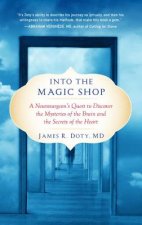
Into the Magic Shop
363 Kč -

Homo Deus
306 Kč -
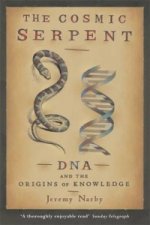
Cosmic Serpent
253 Kč -

Greatest Show on Earth
306 Kč -

Speculations on the Evolution of Human Intelligence
233 Kč -

Blind Watchmaker
358 Kč -

We Are Our Brains
306 Kč -

River Out of Eden
276 Kč -

Brain Book
544 Kč -

Human Brain Coloring Book
436 Kč -

Crack In Creation
369 Kč -

Schaum's Outline of Genetics, Fifth Edition
676 Kč -

Brain Rules (Updated and Expanded)
324 Kč -

Hidden History of the Human Race
345 Kč -
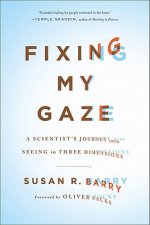
Fixing My Gaze
530 Kč -
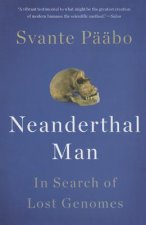
Neanderthal Man
374 Kč -

Why We Run
410 Kč -

On Natural Selection
169 Kč -
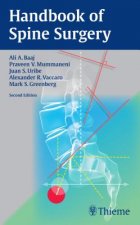
Handbook of Spine Surgery
3167 Kč -

Cartoon Guide to Genetics
410 Kč -

Ecological Thought
722 Kč -

Creative Evolution
432 Kč -

Brief History of Everyone Who Ever Lived
306 Kč -

Social Conquest of Earth
387 Kč -

Consciousness
400 Kč -

Atlas of Human Brain Connections
3373 Kč -

Double Helix
419 Kč -

Masters of the Planet
392 Kč -

Vital Dust
821 Kč -

What Mad Pursuit
700 Kč -

Zooarchaeology and Modern Human Origins
2866 Kč -
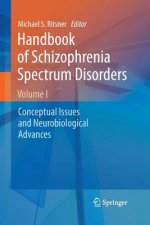
Handbook of Schizophrenia Spectrum Disorders, Volume I
5094 Kč -

Tree of Life
1226 Kč
Osobní odběr Praha, Brno a 12903 dalších
Copyright ©2008-24 nejlevnejsi-knihy.cz Všechna práva vyhrazenaSoukromíCookies


 Vrácení do měsíce
Vrácení do měsíce 571 999 099 (8-15.30h)
571 999 099 (8-15.30h)